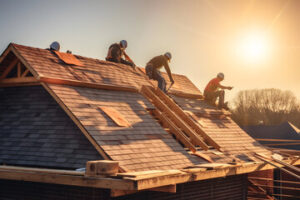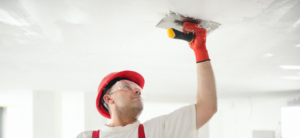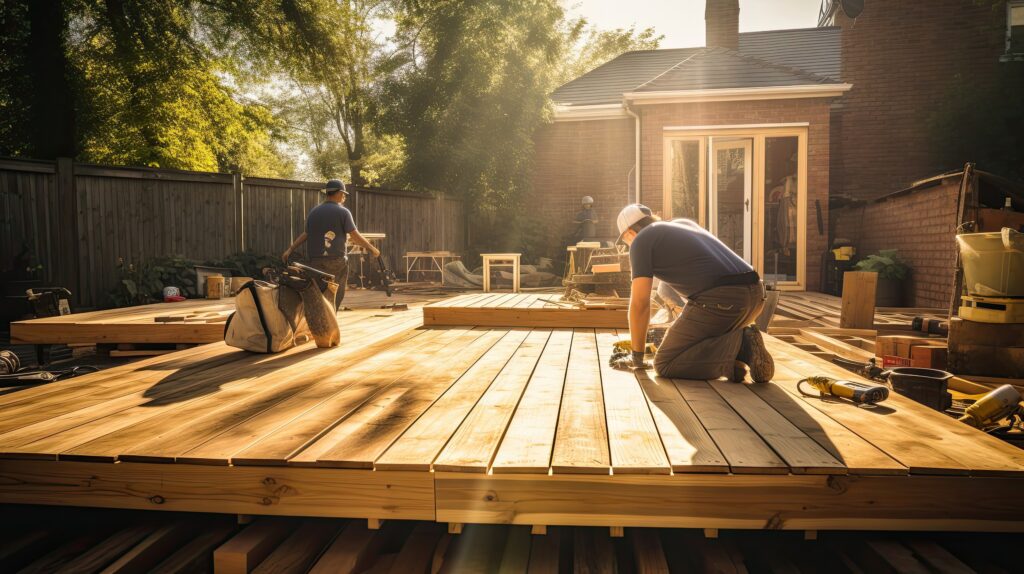A well-maintained roof protects your living space and investment. But if a small problem goes unnoticed it can become a major issue that requires costly professional intervention.

A visual inspection of a roof should be conducted on a regular basis, especially after significant weather events. Catching problems early can save thousands of dollars in repair costs later on. Contact Glacier Roofing for professional help.
The first step in any roofing maintenance program is to inspect the structure. This is usually done by a professional, and may require climbing on the roof itself (although there are alternative methods that can be used). During this inspection, the roofing inspector examines the condition of the essential roof components. This includes examining the shingles, flashing and gutters for signs of wear and tear or damage. They will also check for leaks and sagging. If the roof is sagging, this indicates structural problems that need to be addressed immediately.
They will also look for rust or cracks in the thin metal flashing that lines penetrations such as chimneys, skylights and vent pipes. This is particularly important, as leaks from these areas can cause water damage in ceilings and walls that can be difficult to detect. In addition, they will examine shingle seams for separating and loosening. And they will check the attic for signs of moisture or mold, which can indicate a problem with the attic ventilation system and could lead to a leaky roof.
Next, they will examine the fascia boards and soffit boards that cover the underside of the roof overhangs for signs of rot or warping. They will also check the gutters for clogs and to ensure that downspouts are properly diverting water away from the roof. This is especially important in climates that are prone to freezing and snow.
Finally, they will inspect the roof membrane itself for tears, ponding water, fungus growth or other signs of trouble. They will also take a close look at the exposed edges of the roof for signs of damage from foot traffic or the elements.
In cases where it is unsafe or inconvenient to access the roof directly, or for situations where a thorough examination of the entire roof is necessary, roofers can use a drone to capture photos and video of the surface of the roof. This can be a very useful tool in assessing the condition of the roof, and is an effective alternative to on-site inspections when it comes to routine maintenance.
Inspect the Gutters
Gutters are an important component of the roof system. They are designed to help channel rainwater away from the foundation of the home, preventing water damage to the fascia, siding, and landscaping. However, gutters often become clogged with leaves, twigs, and dirt, causing them to overflow. Regular gutter maintenance helps prevent this, but it’s important to inspect them regularly for signs of clogging or overflowing.
Gutter inspections are best done when it’s not raining. If possible, you should also have someone watch from the ground so that they can call for emergency services if necessary. Before climbing the ladder, it’s a good idea to put on safety gear and gather all the tools you will need, such as gloves, a gutter scoop, and a hose. It’s also a good idea to have a ladder that can be secured to the side of the house and to set it up on a paved or gravel surface instead of the grass to prevent it from sinking into the soil. Once you have climbed the ladder, start by scooping any large debris out of the gutters and placing it in either a bucket attached to the ladder or on the ground for later disposal. Then, flush the smaller debris out of the gutters with a hose and make sure that the downspout is clear of any clogs.
Inspect the gutters for any rust spots or dents and look at their overall condition. If they are damaged or in need of repair, it’s a good idea to replace them as soon as possible to ensure that the gutters continue to function properly.
In addition to inspecting the gutters, this is a good time to look at other high up areas of the house, such as upper floor windows, for any loose shingles or other signs of damage. It’s usually best to leave these types of tasks to professional roofing contractors, as they are well equipped with the right tools and equipment and are familiar with how to safely work at heights. They can also identify and communicate any potential problems with the homeowner so that the appropriate steps can be taken to address them.
Inspect the Attic
An attic inspection reveals a great deal about the health of a roof. A home inspector examines the attic space to check for leaks, mold and rot, ventilation issues, insulation and other problems that may cause a faulty roof or high energy bills. An attic inspection takes about an hour to complete.
An aging roof can cause leaks and water damage that affect the rest of the house. An attic inspection can spot these problems early, so that they can be fixed before they cause extensive damage. An attic inspection can also reveal signs of a pest infestation, such as droppings and nesting materials. If these issues are not addressed quickly, they can lead to expensive repairs and damage to other parts of the house.
Leaks in the attic can be spotted by examining ceiling materials for discoloration or moisture stains. Mold and rot are also easy to spot, since they grow where there is moisture. A professional roofing contractor can help determine the source of the moisture and fix it.
An attic can be insulated in several ways, from blowing in blown-in insulation to putting fiber glass batts in place. A professional will be able to tell which kind of insulation is best for a particular climate and how much insulation is needed. Proper insulation can save homeowners money on electric heating and cooling, as well as protect the roof structure from water damage.
A professional will be able to determine whether the attic has enough ventilation, which can prevent ice dams from forming in winter. In addition, he will check that the soffit and ridge vents are clean and functioning properly to ensure proper airflow in the attic.
A thorough attic inspection can also spot structural problems, such as deteriorating rafters and joists. If they are not repaired, the joists and rafters can collapse, leading to structural damage throughout the house.
Inspect the Interior
When it comes to home inspections, a lot of focus is placed on the roof. However, it’s important to remember that the entire house needs to be inspected for damage. If a homeowner notices any foundation cracks, a shift in the way that walls fit together or that there are any leaning wall, they should notify their inspector right away to assess the damage and determine whether or not the structure is safe.
A structural assessment should be performed on all of the load-bearing walls, beams and foundation supports. It is also important to check the attic and crawlspaces for any structural damage. The attic and crawlspaces should also be inspected for mold and mildew. A proper ventilation system is critical to prevent moisture build-up, which can lead to mildew and mold.
The inspector should also be able to see that all the vents and gutters are functioning properly. A good inspection should also include the garage door, as well as any exterior doors and windows. These doors and windows should be able to open and close, and they should be able to do so without any difficulty. The inspector should make sure that all the caulking around doors and windows is intact and in good condition.
In addition, the inspector should be able to observe any vegetation, landscaping or grading that may adversely affect the structure of the building. The inspector should also be able to note any items that may be a fire hazard or an obstruction, including but not limited to, antennae, satellite dishes and lightning arresters. The inspector should not walk on any roof areas that appear, in the inspector’s opinion, to be unsafe or cause damage.



